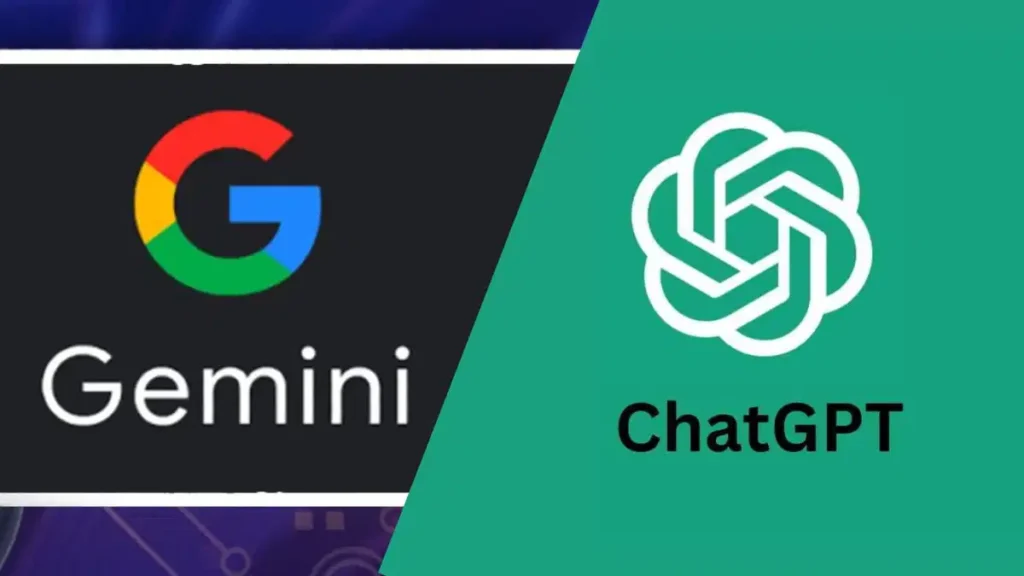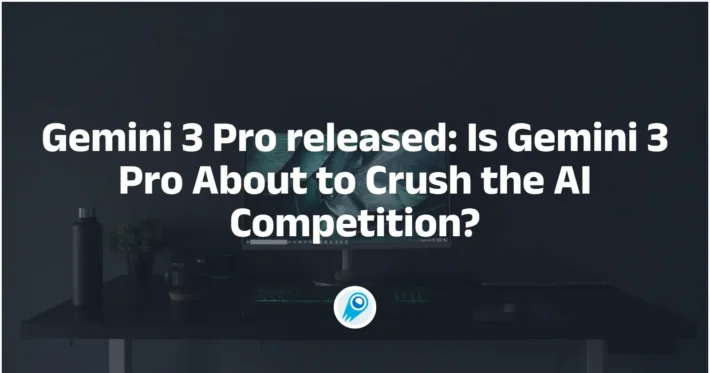Gemini 2.5 vs OpenAI o3: Which is Better

Google’s Gemini 2.5 and OpenAI’s o3 represent the cutting edge of generative AI, each pushing the boundaries of reasoning, multimodal understanding, and developer tooling. Gemini 2.5, introduced in early May 2025, debuts state‑of‑the‑art reasoning, an expanded context window of up to 1 million tokens, and native support for text, images, audio, video, and code — all wrapped in Google’s AI Studio and Vertex AI platforms. OpenAI’s o3, released April 16, 2025, builds on its “o‑series” by internally chaining thought steps to tackle complex STEM tasks, scoring top marks on benchmarks such as GPQA and SWE‑Bench, while adding web browsing, image reasoning, and full tool access (e.g., code execution, file interpretation) for ChatGPT Plus and Pro users. Both platforms offer robust APIs and integration paths, but differ in cost structure, alignment approaches, and specialized capabilities — a comparison that illuminates today’s race toward more capable, versatile, and safe AI systems.
What is Google’s Gemini 2.5?
Origins and Release
Google unveiled Gemini 2.5 on May 6, 2025, positioning it as “our most intelligent AI model” with experimental “2.5 Pro” and flagship variants. Gemini 2.5 Pro first appeared in an experimental release on March 28, 2025, before its public preview on April 9 and the I/O edition by May 6. The announcement came ahead of Google I/O 2025, emphasizing early access for developers via Google AI Studio, Vertex AI, and the Gemini app.
Key Capabilities
Gemini 2.5 delivers advanced reasoning across math and science benchmarks, leading without test‑time ensemble techniques on GPQA and AIME 2025 tasks . In coding, it scores 63.8 % on SWE‑Bench Verified agentic evaluations, a significant leap over Gemini 2.0, and boasts an aesthetic “taste” for web development — auto‑steerable to create responsive UIs from a single prompt . Uniquely, Gemini 2.5 Pro supports up to 1 million tokens (with 2 million tokens coming soon), enabling it to ingest entire codebases, long documents, and multimodal data streams .
Deployment and Availability
Developers can invoke Gemini 2.5 Pro through the Gemini API in Google AI Studio or Vertex AI, with an I/O edition available immediately and general availability in the coming weeks. Google has integrated Gemini across its ecosystem — from Android Auto and Wear OS to Google TV and Android XR — targeting over 250 million users for seamless AI‑powered experiences. While Gemini Advanced subscribers enjoy higher throughput and longer contexts, Google recently surprised users by making the core 2.5 Pro free, albeit with rate limits for non‑subscribers.
What is OpenAI’s o3?
Origins and Release
OpenAI introduced o3 and its lighter counterpart o4‑mini on April 16, 2025, marking the next evolution of its “o‑series” over the earlier o1 branch. The smaller o3‑mini debuted on January 31, 2025, offering cost‑efficient reasoning for STEM tasks, with three “reasoning effort” tiers to balance latency and depth . Despite an earlier plan to cancel o3 in February 2025, OpenAI pivoted to a unified release of o3 alongside o4‑mini, deferring a “GPT‑5” launch to later.
Key Capabilities
O3’s hallmark is its “private chain of thought” mechanism, where the model internally deliberates on intermediate reasoning steps before producing an answer, boosting performance on GPQA, AIME, and custom human‑expert datasets by double‑digit margins over o1. In software engineering, o3 attains a 71.7 % pass rate on SWE‑Bench Verified and an Elo rating of 2727 on Codeforces, significantly outpacing o1’s 48.9 % and 1891 respectively . Furthermore, o3 natively “thinks” with images — zooming, rotating, and analyzing sketches — and supports full ChatGPT toolchains: web browsing, Python execution, file interpretation, and image generation.
Deployment and Availability
ChatGPT Plus, Pro, and Team users can access o3 immediately, with o3‑pro arriving soon for enterprise integration. The OpenAI API also exposes o3 parameters, rate limits, and tool access policies, with verified organizations unlocking even deeper capabilities. Pricing aligns with tool‑enabled tiers, and legacy models (o1, older mini versions) are being phased out over time.
How Do Their Architectures and Model Designs Compare?
Reasoning Mechanisms
Gemini 2.5 employs a “thinking” architecture that surfaces its chain of thought before answering, much like OpenAI’s private chain for o3. However, Gemini’s reasoning appears integrated into its core inference pipeline, optimizing both accuracy and latency without external voting or majority‑vote ensembles . O3, by contrast, explicitly exposes multiple reasoning effort levels and can adjust its deliberation depth per request, trading compute for precision .
Context Windows
Gemini 2.5 Pro offers up to 1 million tokens, slated to expand to 2 million, positioning it as the leader for analyses of entire codebases, lengthy transcripts, and extended multimodal inputs . O3 supports a more conventional context length (on the order of 100 k tokens), suitable for most chat and document‑level tasks but less ideal for extreme long‑form reasoning or single‑file code repository ingestion.
Model Scale and Training
While Google has not published exact parameter counts for Gemini 2.5, indications from LMArena rankings and benchmark dominance suggest a model scale comparable to GPT‑4.1, likely in the hundreds of billions of parameters . OpenAI’s published cards for o3‑mini describe a smaller footprint optimized for low‑latency inference, whereas o3 itself matches GPT‑4.1’s scale (~175 B parameters) with specialized architecture tweaks for reasoning .
How Do Their Performance Benchmarks Differ?
Standard Reasoning Benchmarks
Gemini 2.5 Pro leads on WAN benchmarks like Humanity’s Last Exam with 18.8 % among tool‑free models and tops GPQA and AIME 2025 without ensemble boosts. O3 reports an 87.7 % pass rate on the GPQA Diamond benchmark and similar edge gains on expert‑designed science questions, reflecting its deep reasoning pipeline.
Coding Performance
On SWE‑Bench Verified, Gemini 2.5 Pro scores 63.8 % using a custom agent setup, while o3 achieves 71.7 % on standard SWE‑Bench tasks, demonstrating stronger code issue resolution. Codeforces Elo ratings further illustrate the gap: o3 at 2727 vs. earlier Gemini benchmarks approximated at 2500‑2600 by LMArena enthusiasts.
Multimodal Understanding
Gemini’s native multimodal core handles text, audio, images, video, and code with a unified architecture, achieving 84.8 % on VideoMME benchmarks and powering “Video to Learning” apps in AI Studio . O3’s visual reasoning — including sketch interpretation, image manipulation, and integration with ChatGPT’s image tools — marks a first for OpenAI but lags slightly in specialized video benchmarks where Gemini leads .
How Do They Handle Multimodality?
Gemini’s Multimodal Integration
From inception, Gemini models fused modalities in their pretraining, enabling seamless jump from text summarization to video understanding. With 2.5, implicit caching and streaming support further optimize real‑time multimodal flows in AI Studio and Vertex AI . Developers can feed entire video files or code repositories and receive context‑aware responses and UI mockups in seconds.
OpenAI’s Visual Reasoning
O3 extends ChatGPT’s capabilities: users can upload images, instruct the model to zoom, rotate, or annotate them, and receive reasoning steps that reference visual features. This integration uses the same “tool” framework as web browsing and Python execution, enabling complex multimodal chains — for example, analyzing a chart then writing code to reproduce it .
How Is Developer Ecosystem and API Support Structured?
Gemini API and Ecosystem
Google offers Gemini 2.5 Pro through AI Studio’s web interface and a RESTful API, with client libraries for Python, Node.js, and Java. Vertex AI integration provides enterprise‑grade SLAs, VPC‑SC support, and specialized pricing tiers for pay‑as‑you‑go or committed use . The Gemini app itself includes features like Canvas for visual brainstorming and code generation, democratizing access for non‑developers .
OpenAI API and Tooling
OpenAI’s API exposes o3 with parameters for reasoning effort, function calling, streaming, and custom tool definitions. The Chat Completions and Function Calling APIs allow seamless integration of third‑party tools. Verified Organization status unlocks higher rate limits and early access to new model variants . The ecosystem also includes LangChain, AutoGPT, and other frameworks optimized for o3’s reasoning strengths.
What Are Use Cases and Applications?
Enterprise Use Cases
• Data Analytics & BI: Gemini’s long context and video understanding fit data‑intensive analytics pipelines, while o3’s private chain of thought ensures auditability in finance and healthcare.
• Software Development: Both models power code generation and review, but o3’s higher SWE‑Bench scores make it a favorite for complex bug fixing; Gemini shines in creating full‑stack web prototypes.
Consumer and Creative Use Cases
• Education: “Video to Learning” apps using Gemini 2.5 turn lectures into interactive tutorials; o3’s image reasoning enables dynamic diagram generation.
• Content Creation: Gemini’s multiformat canvas tools aid in video editing and storyboard creation; o3’s ChatGPT plugins support real‑time fact‑checking and multimedia publishing workflows.
How Do They Compare on Safety and Alignment?
Safety Frameworks
Google applies its Responsible AI Principles, with bias testing across languages, adversarial robustness evaluations, and a feedback loop via AI Studio’s in‑browser reporting . OpenAI leverages its updated preparedness framework, red‑team testing, and “verified” channels for high‑risk deployments, alongside transparency reports for tool use and chain‑of‑thought disclosures on o3‑mini.
Transparency and Explainability
Gemini surfaces its reasoning steps upon request, allowing developers to audit decisions; o3’s configurable reasoning effort makes trade‑offs explicit, although chain‑of‑thought remains private by default to protect IP and alignment strategies.
What Are the Future Directions and Roadmaps?
Gemini
Google plans a 2 million‑token context extension, deeper integration with Android and Wear OS devices, and expanded multimodal benchmarks for satellite imagery and scientific data. Vertex AI will gain managed agents built on Gemini, and an upcoming “Agentspace” will let enterprises deploy multi‑agent pipelines across models.
OpenAI
OpenAI hints at GPT‑5, expected late 2025, which may unify o‑series reasoning into a single model with dynamic scaling. Expanded toolchains for robotics, real‑time translation, and advanced planning are under active development, as is tighter integration of o3 with Microsoft’s Azure AI offerings .
In conclusion
Gemini 2.5 and OpenAI o3 each represent a pivotal step toward more intelligent, versatile AI. Gemini focuses on scale — a massive context window and native multimodal fusion — while o3 emphasizes refined reasoning and tooling flexibility. Both platforms offer robust ecosystems and safety measures, setting the stage for next‑generation AI applications from education to enterprise automation. As both roadmaps converge toward unified agent frameworks and even larger context horizons, developers and organizations stand to benefit from choosing the model that best aligns with their performance needs, integration preferences, and alignment priorities.
Use Grok 3 and O3 in CometAPI
CometAPI offer a price far lower than the official price to help you integrate O3 API (model name: o3/ o3-2025-04-16) and Gemini 2.5 Pro API (model name: gemini-2.5-pro-preview-03-25; gemini-2.5-pro-preview-05-06), and you will get $1 in your account after registering and logging in! Welcome to register and experience CometAPI.
To begin, explore the model’s capabilities in the Playground and consult the API guide for detailed instructions. Note that some developers may need to verify their organization before using the model.
Pricing in CometAPI is structured as follows:
| Category | O3 API | Gemini 2.5 Pro |
| API Pricing | o3/ o3-2025-04-16Input Tokens: $8 / M tokens Output Tokens: $32/ M tokens | gemini-2.5-pro-preview-05-06Input Tokens: $1 / M tokens Output Tokens: $8 / M tokens |



